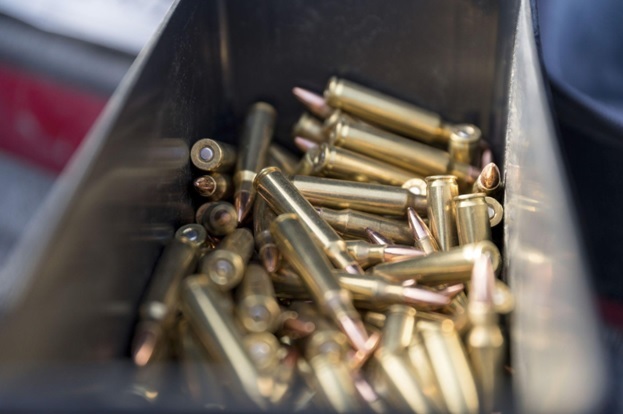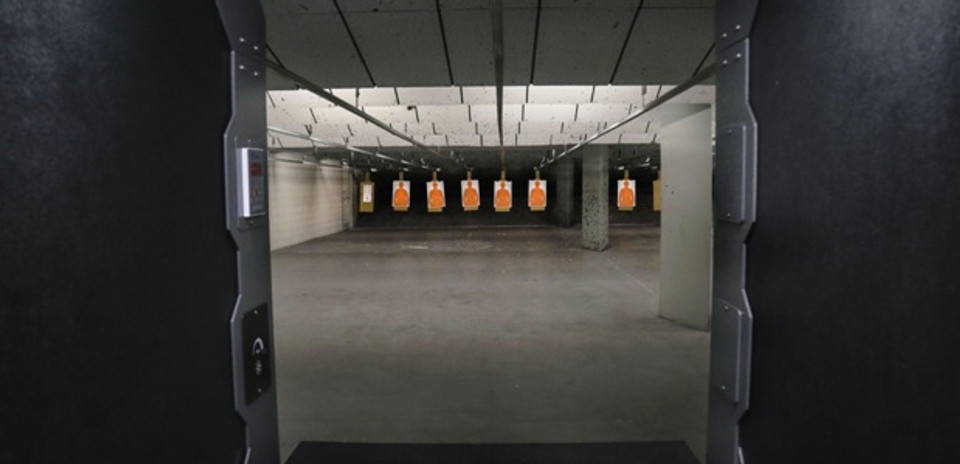The 5.56 and .223 are great, but there’s a whole world of other calibers out there that are just as good if not better. And let’s not forget that one caliber can’t do it all. You wouldn’t want to waste expensive .30-06 ammo plinking, right?
The point is, there’s a lot more than these two cartridges out there, so if you’re looking for an AR upper for your build, broaden your horizons a little. Here are some of the top cartridges for AR uppers, and yes, the favorite two will still make a showing.
.22 LR
Yes, you can build an AR with a .22LR upper, and there are some darn good reasons you might want to.
First, if you love burning brass at the range, then .22LR is the best cartridge out there, end of story, full stop.
There is no cheaper, more reliable, more consistent, more accurate rifle round out there, when you balance all of these factors.
Does it punch through steel targets? No. Does it have the stopping power of 9mm? No. Does it cost as little as 10 cents a round and punch holes in paper? Yes and yes.
Beyond that, .22 LR is accurate, produces basically no recoil or muzzle pop, and is great for training inexperienced shooters, too.
Also, .22 LR is an excellent hunting round for small to medium game, especially in high-volume applications. If you hunt squirrels, rabbits, groundhogs, prairie dogs, foxes, raccoons, coyotes, skunks - then the ol’ long rifle is ideal. We could keep going but this is a solid list.
So, yeah, .22 LR is a great round for an AR build.

.300 AAC Blackout
The .300 AAC Blackout round was developed to give shooters the benefits of bullets in the .30 caliber class while still retaining compatibility with parts for a rifle built around .223/5.56.
The .300 AAC Blackout can be loaded into standard 5.56 AR mags and used with the same bolt carrier. The only thing is you need an AR upper with a .300 AAC Blackout barrel. You can even repurpose old .223/5.56 casings and reload them as .300 Blackout.
But, while you can use most of the same parts, the .300 Blackout produces substantially better stopping power and energy transfer characteristics with an appropriate load.
This makes it a better round for defensive applications at close ranges, say, within 100 yards or so. Beyond that, it has a pretty badly drooping trajectory.
7.62x51mm NATO/.308 Winchester
Even though 7.62 NATO and .308 Winchester are technically not the same round, for the purposes of this article we will treat them as though they are.
Both of these rounds produce substantially more muzzle energy than 5.56, without adding way too much more recoil. Also, the cartridges are relatively similar in size and weight (keyword relatively) so they’re somewhat easy to carry without weighing you down.
Since they produce much more stopping power, they’re categorically superior for both defensive applications and hunting than 5.56 and .223. It can be said without exaggeration that the .308 is one of the most effective sporting cartridges of all time.
With proper shot placement, it can be used to take pretty much any game in North America, and that includes bison and polar bears. Sure, you might want to choose a heavier caliber, but that doesn’t make the .308 light. It isn’t. It’s also a lights-out cartridge with a soft point or hollow point bullet for defensive applications.
Plus, it offers manageable recoil and relative cost-efficiency, so there’s more to love, and, even though you might consider the .223/5.56 better, it’s not a bad long-range cartridge.
6.5 Creedmoor
If you haven’t heard of 6.5 Creedmoor (you probably have) it’s time to change that. The 6.5 Creedmoor, thanks to exceptionally tight tolerances in the design of the chamber throat, is one of the most accurate off-the-shelf cartridges, anywhere in the world, at this time.
But it gets better. The 6.5 Creedmoor is not just inherently accurate, regardless of the barrel or the other parts of your build. It also produces really, really manageable recoil, similar to a .308, but in some cases even less.
But it gets better. While the .308 technically outperforms the 6.5 Creedmoor at close ranges, beyond 500 yards, the Creedmoor outdoes the .308 in basically every way. Making a 1000 yard shot is totally doable, and the Creedmoor retains enough energy even at this range to make effective dispatches on game as large as deer - and possibly even larger. For long-range shooting, it’s hard to do better.
So it’s a pretty great cartridge to build your AR platform around.
.50 Beowulf
Now let’s talk about getting an AR upper for a .50 Beowulf build. This is an impressively large cartridge that shoots massive bullets, as large as 400 grains, that are designed to buck deflection and offer maximum penetration and energy transfer.
Which means an AR upper for a .50 Beowulf is a great build for a rifle intended for defensive applications, as the .50 Beowulf packs up to 2300 ft-lbs of muzzle energy. Compare that to about 400 ft-lbs for most 9mm loads, and the 9mm looks like a joke by comparison.
Just be ready for one thing: it’s hard to find ammo and it can be expensive, so get ready to reload if you build a rifle around this cartridge.
Still a Favorite: 5.56x45mm NATO/.223 Remington

We can’t leave the .223/5.56 off this list. Here are some things to love about it:
- It’s affordable
- It’s accurate
- It’s a good long-range cartridge
- It produces very minimal recoil
- Ammo is readily available
- It can be an effective cartridge for hunting, competitive, and defensive applications
So don’t let us discourage you. If you want to build a rifle with a .223 or 5.56 upper, go for it.
Start Your Build with an AR Upper from MCS Gearup
Ready to get started with your build? We carry a wide range of AR uppers, including complete upper receivers in a variety of different barrel lengths. We also carry the various parts needed to assemble your own, including stripped uppers, gas systems, bolt carrier groups, charging handles, as well as lower parts kits and complete build kits.

